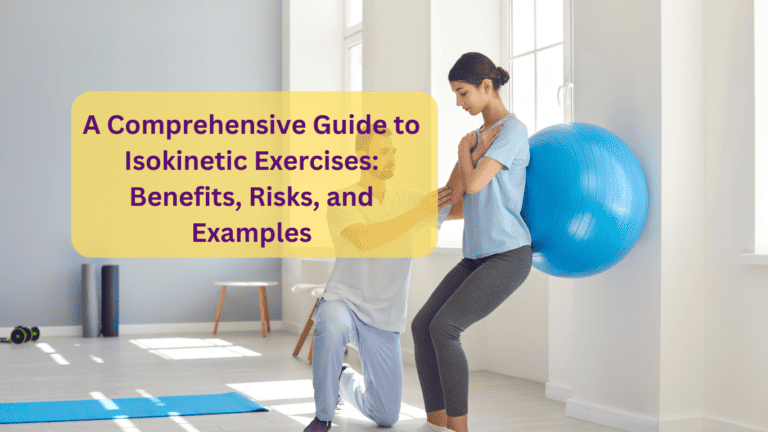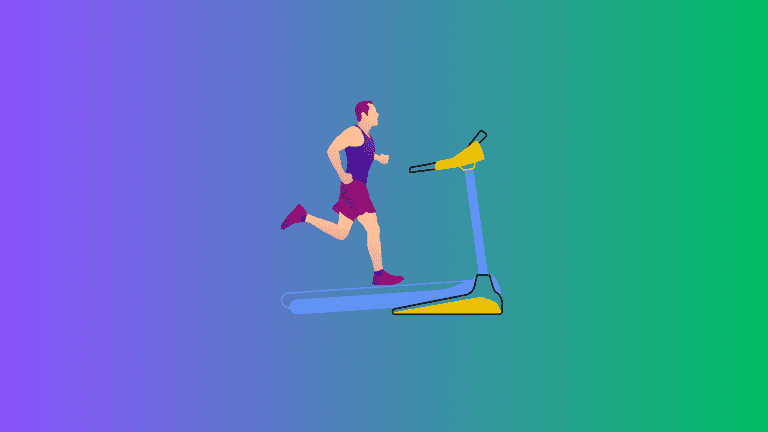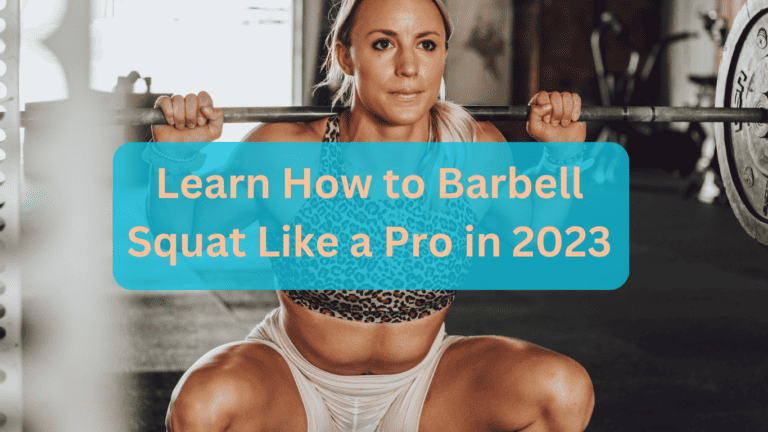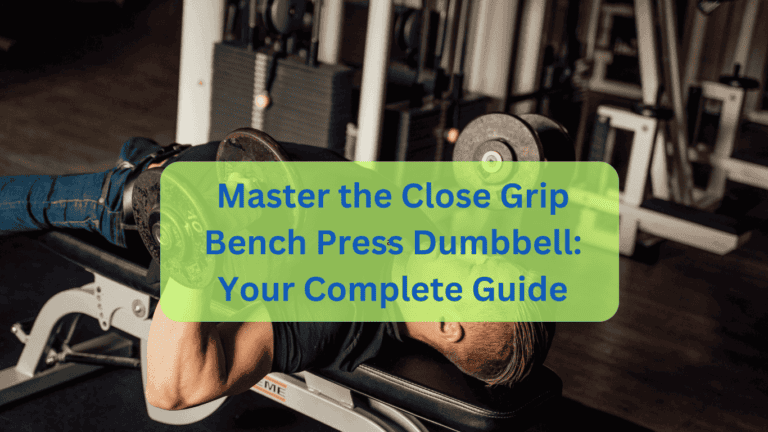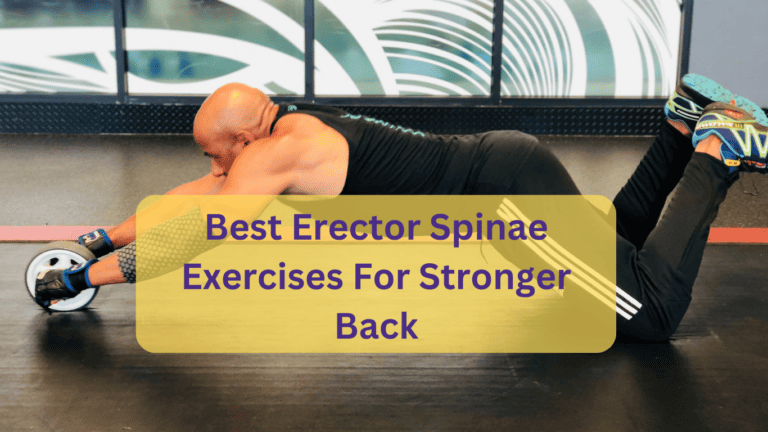13+ Leg Press Alternatives for Effective Home Workouts: Your Guide to Safe and Balanced Leg Training
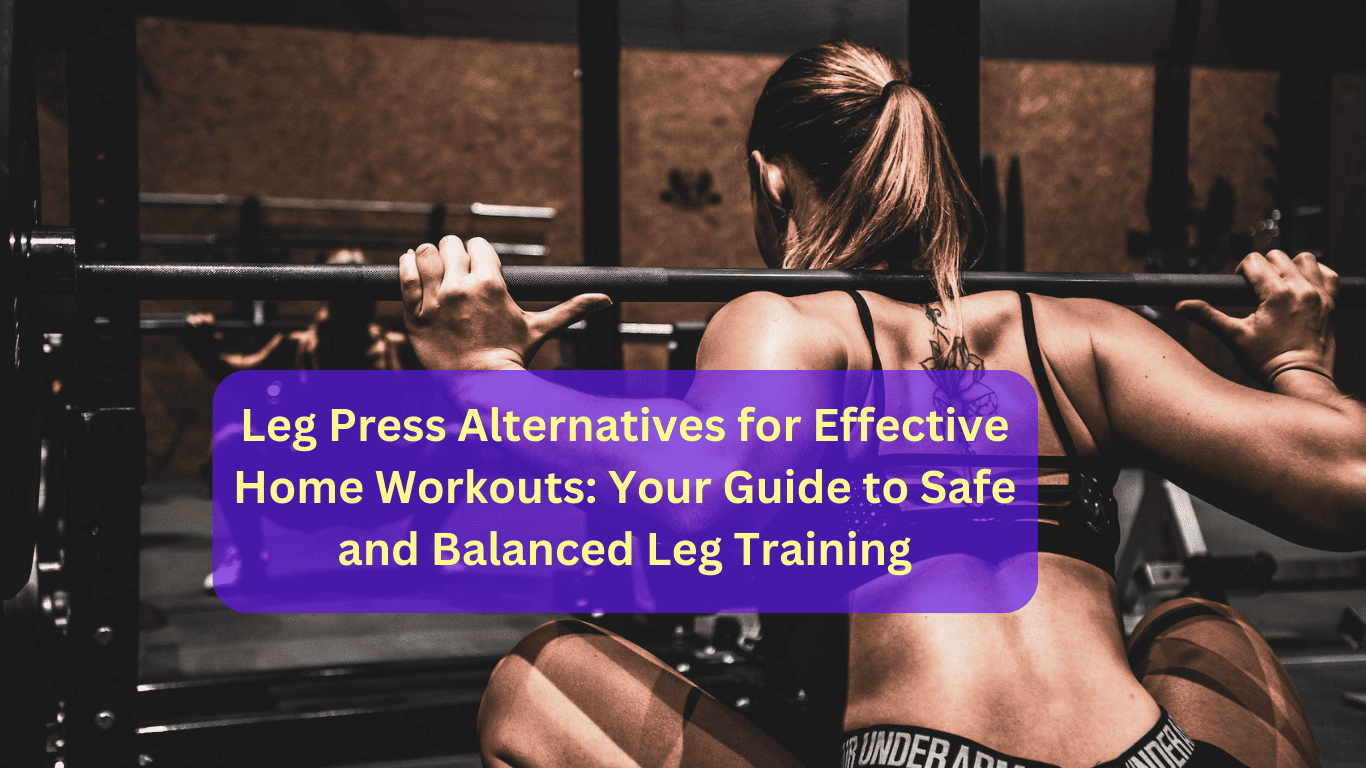
If you’re looking for a safe and effective way to train your lower body at home without a leg press machine, you’re in luck!
We’ve got you covered with 13+ leg press alternatives that are just as effective and can provide you with a well-rounded leg workout. With these alternatives, you can work on your quads, hamstrings, calves, and glutes while also improving your core strength and stability.
In this guide, we’ll walk you through each exercise, explaining proper form and modifications so you can customize each one to your fitness level. Whether you don’t have access to a leg press machine or you simply want to mix up your leg training routine, these leg press alternatives will help you achieve your fitness goals.
Now, let’s jump right in and give those legs a workout that will leave them burning!
Understanding Leg Strength
Leg strength is not just an essential component of athletic performance, but it is also crucial for everyday life.
Whether it’s walking up a flight of stairs, carrying groceries, or simply getting out of bed, our lower body muscles are responsible for almost all of our movements. Neglecting leg strength can lead to a lower quality of life as we age or suffer from injuries. It’s important to note, though, that misinformation or improper exercise techniques can also have severe consequences, including muscle tears, strains, and other injuries.
Instead of solely relying on the leg press machine, consider leg press alternative workouts such as squats, lunges, and deadlifts to engage a variety of leg muscles while maintaining an upright torso to reduce the potential for injuries.
By cultivating awareness and employing effective leg-strengthening techniques, you can nurture a stronger physique, enabling you to accomplish feats previously beyond your reach. This, in turn, can enhance your overall quality of life beyond the confines of the gym.
Benefits and Importance of Leg Press Alternative
Leg press alternative exercise is a fantastic way to achieve a full-body workout that benefits your functional strength and reduces injury risk. Unlike leg exercise machines that only target the same muscles every time, alternatives engage varied muscles that promote balanced development.
- Minimum Equipment: One significant benefit of these alternatives is that they can be performed using just your body weight, minimum or without equipment.
- Functional Strength: Leg press alternative exercises that mimic everyday movements enhance functional strength while reducing strain on joints, and minimizing injury risk.
- Improve Balance: Stabilizing exercises improve core strength and posture. And, by challenging balance, alternatives enhance coordination.
- Caloric Expenditure: Notably, compound exercises aid calorie expenditure, which is beneficial for those looking to burn more calories.
- Enhanced Flexibility: The full range of motion in leg press alternatives also helps to boost flexibility.
- Mind-Muscle Connection: Engaging in various leg exercises fosters a robust mind-muscle connection, enhancing muscle recruitment and activation. Additionally, they offer a time-efficient approach by targeting multiple muscle groups simultaneously, resulting in greater efficiency.
These alternatives are ideal for enhancing athletic abilities and functional fitness, promoting better muscle engagement and activation, and reducing upper body and back pain.
Safety Considerations for Leg Press Alternative Exercises
When it comes to leg training, there are certainly risks to be aware of – but with the right precautions, you can minimize those risks and train safely and effectively.
- Proper Form: The most important thing is to maintain proper form throughout your exercises. This helps prevent injuries and ensure that you’re targeting the correct muscles.
- Warm Up: It’s also crucial to warm up before diving into your main routine – this helps prepare your muscles for the work ahead.
- Proper Weight: When choosing weights, start light and gradually increase the intensity over time.
- Balance Workout: If you’re searching for a suitable leg press substitute, explore exercises that engage your posterior knee and inner thigh muscles. By targeting these areas, you can achieve a well-rounded and balanced workout, avoiding any muscle imbalances.
- Listen to Your Body: It’s always a good idea to listen to your body – if you experience pain or discomfort, stop and take a break.
By keeping these precautions in mind, you can develop robust and resilient legs while minimizing unnecessary risks. Before starting any alternative leg press workouts, it is crucial to consult with a healthcare professional or personal trainer. This will help you avoid injuries resulting from improper form or pre-existing conditions. Remember, safety and proper technique are paramount when it comes to your fitness journey.
11+ Leg Press Alternative Exercises: Expert Guidance
1. Goblet Squat
The Goblet Squat is a fantastic leg press alternative that targets key muscle groups like quads, hamstrings, and glutes. Unlike the leg press, it engages core muscles to stabilize the torso and protect the spine. This dynamic exercise also promotes an upright posture and increases flexibility and mobility in the hips, knees, and ankles. Whether you’re a beginner or a fitness enthusiast, incorporating Goblet Squats into your routine can help you build a stronger and more capable body.
To execute a goblet squat:
- stand with your feet slightly wider than shoulder-width apart.
- Hold a dumbbell in both hands close to your chest
- With your chest lifted, sit back and down like you’re sitting in a chair.
- Keep your core tight and maintain an upright position as you lower yourself to the ground.
- Push through the heels of your feet to return to a standing position.
- Repeat for desired reps 3 sets of 10 reps
- Cautions for those with knee issues and modifications: If you have pre-existing knee issues, it’s important to adjust the range of motion and intensity level. You can reduce the depth of your squat or use a lighter weight. It’s also helpful to focus on activating the glutes and maintaining good form without compromising your joints or muscles.
2. Bulgarian Split Squats
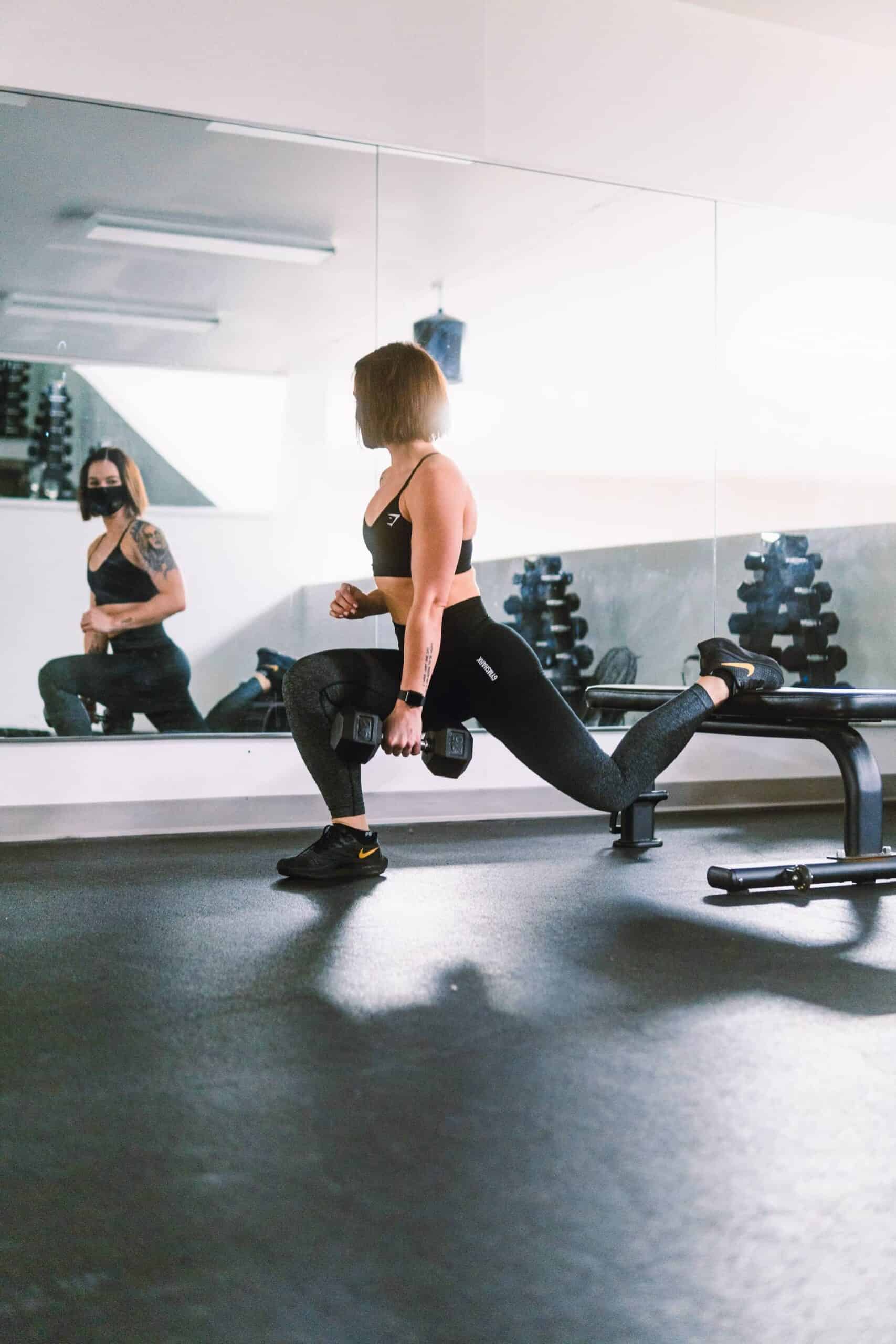
The Bulgarian Split Squat is another great leg press alternative exercise that can be done without a leg press. This unilateral movement helps to strengthen your core muscles while challenging the quads and hip flexors.
Incorporating unilateral movements into your routine can greatly enhance your balance and address any existing imbalances. This exercise is a valuable addition that promotes stability and overall physical well-being.
To execute a Bulgarian Split Squat:
- Place one foot on an elevated surface behind you, such as a bench or chair.
- Place your hands on your hips and keep your chest up as you lower yourself into a lunge position by bending both knees toward the floor.
- Push through the heel of the front foot to return to standing, then repeat for the desired number of reps.
- Aim for 3 sets of 10 reps per side with proper form.
- Make sure to switch legs for each set.
3. Step-Ups
Step-ups are a highly underrated exercise that can be performed virtually anywhere. By focusing on one leg at a time, this exercise effectively targets and tones the quadriceps and glutes while simultaneously promoting balance.
Step-ups serve as an excellent alternative to the leg press, as they work to strengthen the muscles of the lower body, including the quadriceps, hamstrings, gluteus, and calves. In addition, they offer a range of other benefits such as improving functional fitness, enhancing balance, and engaging the core.
Incorporating step-ups into your workout routine provides a versatile and effective way to target multiple muscle groups while reaping the rewards of improved strength and stability. Give them a try as a compelling leg press alternative and unlock the full potential of your lower body workout.
To do Step-Ups:
- Choose an appropriate height for the step; you should not feel uncomfortable or unstable during the movement.
- Place one foot on the step and press through your heel as you drive up to standing – don’t use too much momentum.
- Ensure you keep your chest up and core engaged throughout the move, then return the same foot to the starting position.
- Aim for 3 sets of 10 reps per side with proper form.
- Make sure to switch legs for each set.
4. Lunges
Lunges offer a fantastic opportunity to enhance balance and coordination while simultaneously strengthening the lower body. This exercise is particularly effective at engaging the glutes, hamstrings, quadriceps, and calves – all of which play a crucial role in overall strength and stability. Additionally, lunges target other key muscles such as the erector spinae, adductors, abductors, and hip flexors.
By incorporating lunges into your routine, you can effectively work on both lower body strength and core stability in a single exercise. Just remember to maintain an upright posture throughout each repetition. To begin your lunges journey, follow these simple steps:
- Stand tall with feet hip-distance apart and take a large step forward with one foot while keeping your core engaged.
- Ensure that both feet are facing forward, then lower your back knee towards the ground while keeping your front shin vertical.
- Push off the floor using your heel to return to starting position and repeat on the other side.
- Aim for 3 sets of 10 reps per leg with proper form.
- To elevate the challenge, incorporate additional resistance by utilizing dumbbells, kettlebells, or a weighted vest. This will enhance the difficulty level and optimize your workout experience.
5. Romanian Deadlifts
Romanian Deadlifts (RDLs) are a compound exercise that specifically targets the hamstrings and glutes through a hip hinge movement. Unlike traditional deadlifts, RDLs place greater emphasis on stretching and contracting these muscles. They offer a multitude of benefits, including hamstring development, enhanced glute activation for a strong posterior, improved hip mobility, and strengthened posterior chain muscles, including the lower and upper back.
Additionally, RDLs engage the core muscles for stabilization, contributing to better posture and aiding in functional strength for everyday activities. Furthermore, they play a crucial role in injury prevention. This exercise effectively targets multiple muscle groups, such as the hamstrings, glutes, erector spinae, upper back, traps, and core muscles, while also challenging forearm and grip strength.
By performing RDLs with proper form and progressively increasing the weight, significant gains in muscle strength and size can be achieved, particularly in the hamstrings and glutes. This, in turn, promotes the overall development of the posterior chain and enhances functional fitness.
To perform a Romanian Deadlift:
- Start with a shoulder-wide stand and hold a barbell in front of you.
- Engage the core, hinge at the hips, and lower the weight down until it reaches the knee level while keeping your back slightly arched and maintaining tension throughout the movement.
- Once you reach the bottom position, extend your hips forward to return to standing
- Repeat 3 sets of 10 reps
Performing Romanian Deadlifts is an essential part of any leg workout routine and helps build overall strength and balance in the lower body. For those looking to build muscle mass, RDLs can help achieve that goal by targeting multiple muscle groups simultaneously. In addition, they can be used as a warmup exercise prior
6. Single-Leg Deadlifts
Single-leg deadlifts are a powerful leg press alternative that engages multiple muscle groups. This unilateral exercise improves strength, balance, and core engagement while addressing muscle imbalances. The controlled shoulder-width execution of this exercise enhances coordination, lower back strength, and lower leg strength.
Incorporating single-leg deadlifts into your fitness routine can help develop a well-rounded lower body, improve balance, and enhance functional fitness. You can perform this exercise with a barbell, dumbbell, or kettlebell. Remember, proper form and gradual weight increase are crucial for maximizing its benefits.
To perform a single-leg deadlift:
- start by standing with both feet shoulder-width apart.
- Engage the core, lift one leg off the ground, and hold the weight in front of you.
- Hinge at the hips until your upper body is parallel to the ground while maintaining tension throughout the movement.
- Once you reach the bottom position, extend your hips forward to return to standing.
- Repeat 3 sets of 10 reps per leg
7. Barbell Squats
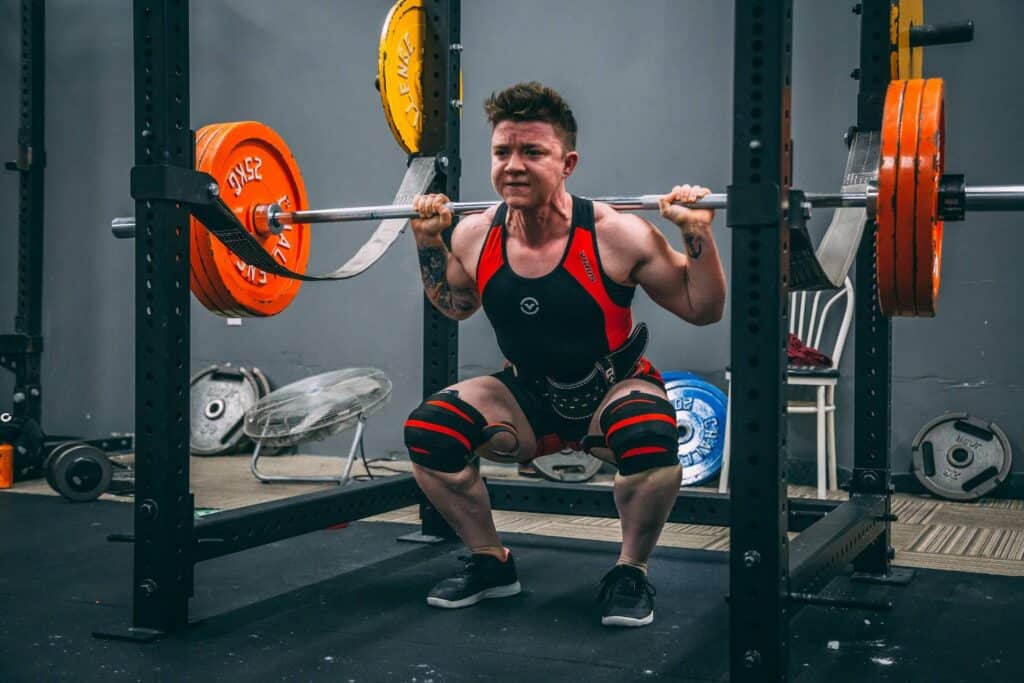
If you want to strengthen your legs without using a leg press machine, barbell squats are an excellent leg press alternative exercise. You can perform them at home with minimal equipment. This allows you to work your leg muscles effectively and efficiently while enjoying the convenience of exercising in your own space.
This compound exercise offers a host of benefits, including comprehensive strength development in major muscle groups like the quadriceps, hamstrings, glutes, and core. Plus, it’s a great way to promote muscle growth, functional fitness, bone density, and hormonal responses.
With a Barbell Squat, you’ll not only enhance your core stability and mobility but also your overall athletic performance. If you’re not comfortable with the free weight squat, there are alternatives like the Smith machine squat, squat rack, or leg press. Just be sure to prioritize proper form and progression for optimal
To perform barbell squats:
- Start with a shoulder-wide stand
- Place the barbell on your upper back as you would for a back squat.
- Maintain a neutral spine and keep your core engaged throughout the movement.
- Squat down until your thighs are parallel to the floor, then begin to drive through your feet as you come back up into the standing position.
- Repeat 3 sets of 10 reps.
8. Calf Raises
Calf Raises is a great leg exercise. Not only do they help with aesthetic enhancement, but they also provide injury prevention and support for everyday activities like walking and running.
The primary muscles engaged are the gastrocnemius and soleus, both essential for ankle movement. Plus, by performing Calf Raises with proper form and gradually increasing your repetitions, you’ll be on your way to developing strong, well-defined calf muscles and enhancing your overall lower leg fitness.
As an alternative to leg presses, Calf Raises are a straightforward yet impactful exercise, helping to improve balance, stability, and functional strength without needing any equipment.
To perform Calf Raises:
- Start with a shoulder-wide stand
- Place your hands on a wall or counter to maintain balance throughout the movement.
- Lift your heels off the ground and hold for two seconds before lowering them back down.
- Repeat 15 repetitions, then rest for 30 seconds before doing 3 sets of 15 reps.
9. Glute Bridges With Resistance Band
If you’re looking for a potent exercise to add to your routine that targets your glutes and offers a range of benefits, Glute Bridges are an excellent choice.
This movement involves raising your hips while lying on your back, engaging and strengthening the glutes.
But did you know that Glute Bridges can be taken up a notch with the use of a resistance band? That’s right, by adding a band to your Glute Bridges, you can create even more tension and resistance, thus enhancing the benefits.
Plus, it’s an ideal alternative to a leg press, especially if you don’t have access to a gym. Incorporating Glute Bridges with a resistance band into your routine can help you develop a firmer posterior, bolster overall lower body strength, and promote better posture and athletic performance. Remember, proper form and gradual progression are key, but with commitment and dedication, you’ll reap the rewards.
To perform Glute bridge with Resistance Band:
- Lie on your back with your feet planted firmly on the ground and your knees bent.
- Place a resistance band around the middle of your thighs, making sure it’s secure and tight before beginning the exercise.
- Push up through your heels to raise your hips off the ground until they are in line with your shoulders and knees.
- Hold this position for a few seconds before lowering your body back to the starting position.
- Perform 3 sets of 15 reps and remember to gradually increase the level of resistance as your strength improves.
Disclaimer: The information provided in this blog post is for educational and informational purposes only and should not be construed as medical advice or a substitute for professional medical guidance, diagnosis, or treatment. Always consult a qualified healthcare professional before starting any exercise program or changing your current routine. The author and publisher of this blog post are not responsible for any adverse effects, injuries, or consequences resulting from using or misusing the information provided. The reader assumes full responsibility for any actions taken based on the information presented in this blog post.
10. Landmine Single Leg RDL
Landmine exercises involve a barbell attached to a pivot point, typically a landmine attachment or a corner. This setup allows for versatile movements that engage multiple muscle groups while promoting stability and joint-friendly benefits. One end of the barbell is anchored, while the other is held, enabling controlled motions suitable for various fitness levels.
If you’re looking for an exercise that offers a range of benefits, including improved balance, reduced muscle imbalances, and functional strength, the Landmine Single Leg Romanian Deadlift might be just what you need.
By balancing on one leg and hinging at the hips using a barbell attached to the landmine setup, you can effectively target your hamstrings, glutes, and lower back. Not only does it yield great results, but it’s also gentle on your joints, making it a valuable addition to your lower body workouts.
Including Landmine Single Leg RDLs in your leg day routine can boost strength, balance, and stability. These exercises target single-leg and bilateral movements, promoting healthy muscle development. For better results, add sets of tempo reps or isometric holds.
To perform Landmine Single Leg RDL:
- Begin by standing in a split stance, with your feet staggered and one foot slightly ahead of the other.
- Place one end of the barbell in front of you on the ground, and grip it from behind with both hands.
- Keeping your back straight, hinge at your hips to lower the weight towards the ground while extending your opposite leg behind you.
- At the bottom of the movement, your torso should be parallel to the ground and your working leg should be extended in a straight line behind you.
- Drive through your heel to lift yourself back up to a standing position while keeping tension on the barbell.
- Make sure that your weight is evenly distributed between both feet throughout the exercise.
- Perform 3 sets of 15 reps and remember to gradually increase the level of resistance as your strength improves.
11. Landmine Squats
Looking for a full-body exercise that packs a punch? Meet the Landmine Squat. With its barbell setup anchored to a pivot point, this exercise reduces strain on joints while targeting key muscle groups like the quads, hamstrings, and glutes. Plus, the core is heavily engaged for improved balance and functional strength.
As a leg press alternative, Landmine Squats offer a joint-friendly option that promotes muscle symmetry and works for a range of fitness levels. With proper form and gradual progression, you’ll be on your way to achieving a well-rounded lower-body workout that contributes to muscle development, stability, and overall fitness.
To perform Landmine squats:
- Set up a barbell in the corner of a room, securing one end to the wall or floor with a landmine attachment.
- Position your feet about shoulder-width apart and slowly hinge at the hips, bringing your arms down between your legs as if you were doing a traditional back squat.
- Drive through your heels to stand upright while keeping tension on the bar.
- Stay mindful of your core and focus on maintaining a neutral spine throughout the exercise.
- Perform 3 sets of 15 reps, increasing resistance as needed.
- Please exercise caution: it is crucial to select the appropriate weighted plate based on your experience level to minimize the risk of injury. Remember, you can always adjust the weight as necessary to achieve optimal efficiency.
12. Landmine Thruster
If you’re looking for leg press alternatives that offer a full-body workout, then Landmine Thrusters might be perfect for you!
This dynamic exercise combines front squats and overhead presses using a barbell attached to a landmine attachment – engaging various muscle groups, including the quadriceps, hamstrings, glutes, shoulders, and triceps. The front leg is intensely targeted, making it a great exercise for those looking to increase their leg strength.
But Landmine Thrusters isn’t just for leg day – it’s a comprehensive full-body workout that burns calories, improves joint flexibility, stabilizes your core, and boosts your cardiovascular system.
To perform Landmine Thruster:
- Set up your landmine attachment in the corner of a room.
- Position your feet about hip-width apart and hold onto the barbell with both hands.
- Slowly hinge at the hips while keeping your core engaged, bringing the bar down between your legs as if you were doing a traditional front squat.
- Drive through your heels to stand tall and press the bar overhead while keeping your core tight and squeezing both glutes.
- Perform 3 sets of 10 reps, increasing resistance as needed.
13. Hack Squat
The Hack Squat is an exercise that many gym-goers know and love. It’s an effective way to target your quads, hamstrings, and glutes, and the specialized Hack Squat machine provides great support, making it an ideal exercise for building lower body muscle strength and mass.
If you’re looking for a lower body workout that’s a little different than the traditional leg press machines, the Hack Squat is a great alternative. Plus, you’ll get to work on your balance and stability, which can translate into better overall athleticism.
To perform Hack Squat:
- Position your feet shoulder-width apart at the bottom of the Hack Squat machine.
- Take a deep breath, engaging your core and glutes, to stabilize your spine.
- Slowly lower the weight in an arc motion as if you’re sitting down on a chair. Make sure to keep your head up throughout the movement.
- Push through your heels to stand up, squeezing your glutes at the top.
- Perform 3 sets of 10 reps, increasing resistance as needed.
14. Spanish Squat
Are you looking to boost your lower body strength while minimizing knee strain? Look no further than the Spanish squat!
This unique exercise involves squatting with a resistance band around the knees or upper calf, anchored securely to a fixed point. By promoting more vertical shin positions, this technique helps to reduce knee joint pressure.
Originally designed to address the jumper’s knee, it’s especially beneficial for those involved in jumping or running activities. Whether you choose to perform it with body weight or added weight like a kettlebell, mastering proper form is key to effective and safe execution.
To perform Spanish Squat:
- Stand in front of a fixed anchor point with your feet shoulder-width apart.
- Attach an exercise band around your knees or upper calves and hold on to the ends with your hands.
- Maintain a neutral spine while lowering into a squat until your thighs are parallel to the floor, keeping tension on the band throughout the movement.
- Push through your heels to stand up, squeezing your glutes at the top.
- Perform 3 sets of 10 reps, increasing resistance as needed.
15. Box Jumps
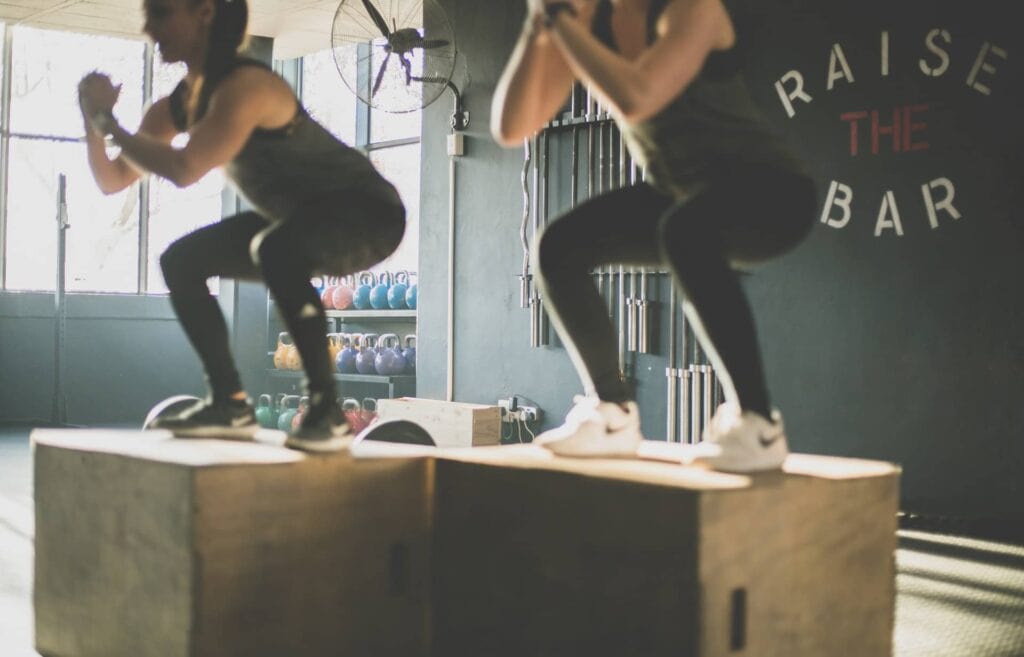
Box jumps are a fantastic exercise to add variety to your lower body workout. They provide a challenging leg press alternative to enhance athletic performance, build lower body muscle, and improve overall fitness. Adjust the box height to suit different fitness levels. Focus on proper techniques like landing softly on the balls of your feet and progressing gradually to avoid injury.
Incorporating box jumps into your routine is a fun and effective way to target quadriceps, hamstrings, calves, and core muscles, while improving coordination, explosiveness, and power.
To perform Box Jumps:
- Stand in front of a box or bench with feet shoulder-width apart.
- Bend your knees slightly and push through the heels to jump onto the box with both feet landing evenly.
- Step back down, resetting your body before each rep.
- Complete 3 sets of 10 reps, increasing resistance as needed.
Conclusion
As fitness enthusiasts, we know leg workouts are vital for building a strong, well-rounded physique. But with limited access to gym equipment and trainers due to the pandemic, it’s crucial to find safe and effective leg press alternatives. Prioritizing your well-being and preventing injuries from overreaching or improper form is key.
For accurate and expert-backed information on the best alternatives, consider consulting healthcare professionals such as physical therapists or personal trainers. They can guide you in safely and effectively incorporating these alternatives into your home workout routine while respecting individual limitations.
FAQ for Leg Press Alternatives
Are leg press alternatives suitable for beginners?
Absolutely. Leg press alternatives offer a versatile range of exercises suitable for individuals of all fitness levels. Choose options that align with your current abilities and gradually progress to more advanced variations.
Can I achieve the same results as the leg press machine with these alternatives?
Yes, leg press alternatives provide an effective way to target your leg muscles without the need for specialized equipment. By incorporating a variety of exercises, you can achieve balanced leg strength and muscle development.
How can I ensure proper form while performing these exercises at home?
The form is crucial to prevent injuries. Watch tutorial videos or consult fitness experts to understand the correct techniques. Start with lighter weights and focus on mastering the movement before adding resistance.
Do leg press alternatives to engage other muscle groups too?
Absolutely. Many leg press alternatives are compound exercises that engage multiple muscle groups, contributing to overall body strength and stability.
What if I have knee or joint issues? Can I still perform these exercises?
It’s essential to prioritize safety and consult a healthcare professional if you have any concerns. Some alternatives may be more suitable than others, so choose exercises that don’t exacerbate your condition and consider modifications if needed.
